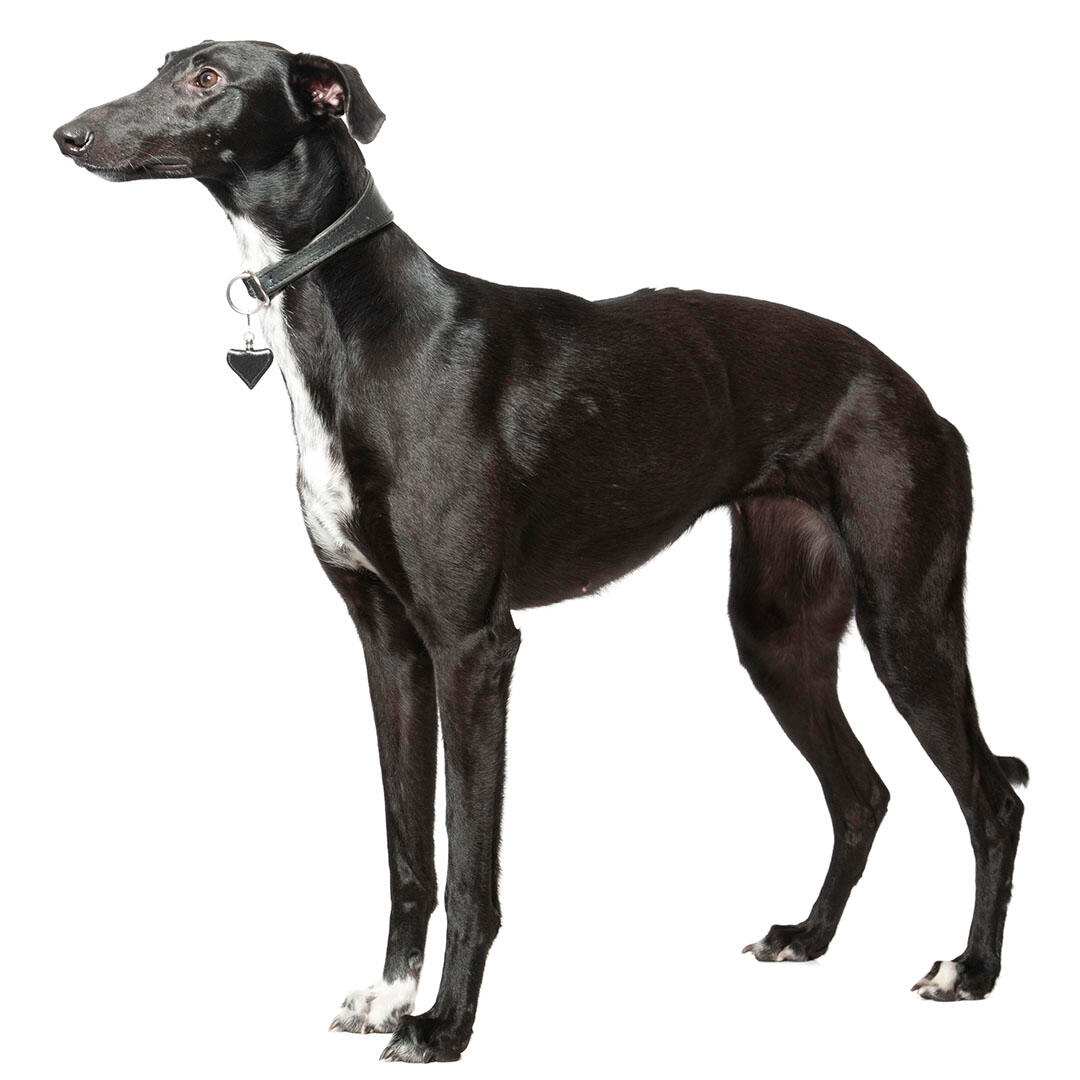
| Family-friendly: | 5/5 |
| Exercise needs: | 5/5 |
| Easy to train: | 4/5 |
| Tolerates being alone: | 2/5 |
| Likes other pets: | 3/5 |
| Energy level: | 5/5 |
| Grooming needs: | 3/5 |
| Shedding: | 2/5 |
The Whippet breed can be prone to:
- Mitral valve disease which is where the heart valves become diseased and don't work properly.
Priority Kennel Club health schemes and testing:
None but there are several recommended schemes that the Kennel Club recommends which can be found here.
The Whippet is a gentle, patient, tolerant and affectionate dog. Although they are competitive when on the chase, they are adaptable and quiet dogs. They can be highly strung and need understanding from their owners. Loving to their family, they make rewarding companions in the right home.
| Family-friendly: | 5/5 |
| Exercise needs: | 5/5 |
| Easy to train: | 4/5 |
| Tolerates being alone: | 2/5 |
| Likes other pets: | 3/5 |
| Energy level: | 5/5 |
| Grooming needs: | 3/5 |
| Shedding: | 2/5 |
The Whippet was once referred to as the ‘poor man’s Greyhound’ and that described them well. They were developed in the 19th century by miners in the north of England who couldn’t afford to keep a Greyhound so they invented their own smaller, less costly version. Records of these breeding’s weren’t kept, but depending on who you believe, they were either progressive breeding’s of smaller Greyhounds or else Italian Greyhounds crossed with Manchester Terriers with back breeding to Greyhounds.
However, they were largely used for the sport of competitive rabbit killing - where rabbits would be released and the first dog to make a kill won. This permitted the miners to engage in gambling with little cost. When cruel sports were banned, they turned to ‘rag’ racing where a cloth was dragged in a straight line and the dogs would race. These two sports gave rise to the Whippets other names - Snap Dog and Lighting Rag Dog.
Today the Whippet has won fans all over the world as a gentle companion dog.
Ideal Whippet owners will have some previous sighthound experience, and be forgiving of a small dog that wants to live under the duvet covers, considers rain dangerous to their health, and has a bigger wardrobe than most people. It could be easy to forget this is a capable and efficient hunter, but you must not – you’ll need the time and patience to train a solid recall and ensure your Whippet doesn’t pose a risk to other animals. You’ll be rewarded with adoration and cuddles galore, particularly if you’ve sat in the same comfy warm spot they want to sit in!
Whippets are capable of short, sharp bursts of fast running but are spirited enough to spend a long day of exercise if required. They will be happy to walk or jog with their owners and, although in need of daily exercise, are not too demanding. An hour's exercise is needed, as a rough guide, for an adult.
Whippets love to run and so finding an enclosed local area where they can do that will keep them happy.
While Whippets need space to run, in the home they are happy whatever its size as long as there is a comfy sofa for them to spend their days. They do need access to outdoor space for toileting and daily exercise.
Your dog's diet needs to have the right balance of all the main nutrient groups including a constant supply of fresh water. It's also important to conduct regular body condition scores to ensure you keep your dog in ideal shape and remember to feed them at least twice daily and in accordance with the feeding guidelines of their particular food.
The Whippet dog breed benefits from regular grooming but care must be taken to use soft brushes and gentle handling, as their coat and skin is very fine and sensitive. Any shampoo used should be gentle without harsh ingredients, as these may cause reactions with their sensitive skin.
Like most sighthounds, Whippets rather look down on training, but they can learn basic obedience and should be taught to walk on a harness and lead. Effort should be made to teaching them a good recall - although this shouldn’t be relied upon as the thrill of the chase can often mean their owner is temporarily forgotten.
If you own cats, finding a puppy from a breeder who has reared them with cats will help. If not, spend time teaching our puppy that the cat isn’t a chase toy. Whippets however may never be safe with other cats or small animals.
Whippets make wonderful family dogs as they are gentle and kind - but they also like peace and quiet, so a noisy boisterous house will not be good for them.
While many dogs are traditionally thought of as being good with children, all dogs and children need to be taught to get on with and respect each other, and be safe together. Even so, dogs and young children should never be left alone together and adults should supervise all interactions between them.